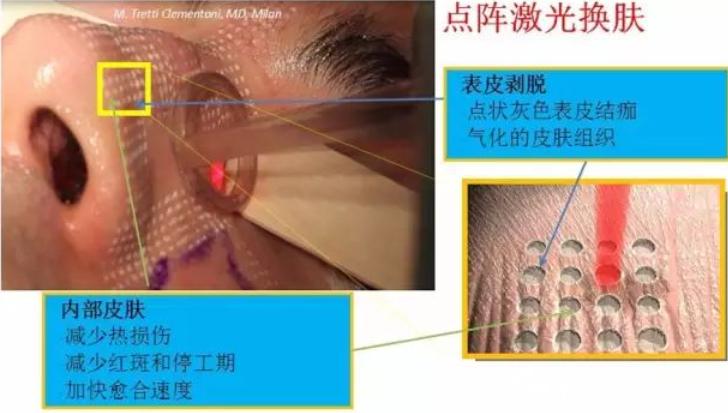医学激光美容
Title: Understanding the Principles of Laser Medical Aesthetics
In the realm of medical aesthetics, laser technology has revolutionized the way we address various skin concerns and cosmetic procedures. Below, we delve into the principles underlying laser medical aesthetics, providing insights into its mechanisms and applications.
Introduction to Laser Medical Aesthetics
Laser medical aesthetics encompass a range of procedures aimed at enhancing one's appearance through the use of laser technology. These procedures can target skin imperfections, unwanted hair, signs of aging, and more, with precision and minimal downtime. At the core of laser aesthetics lies the principle of selective photothermolysis, wherein specific targets absorb light energy from the laser, leading to their destruction or modification while sparing surrounding tissues.
Understanding the Principles: Selective Photothermolysis
Selective photothermolysis involves the selective targeting of chromophores within the skin using appropriate wavelengths of laser light. Chromophores are components within the skin that absorb light energy, such as melanin, hemoglobin, and water. By choosing a wavelength that matches the absorption spectrum of the target chromophore, laser energy can be efficiently absorbed, leading to thermal damage to the target while minimizing damage to surrounding tissues.
Types of Lasers Used in Medical Aesthetics
1.
Alexandrite Laser
: Effective for hair removal and treatment of pigmented lesions.2.
Nd:YAG Laser
: Suitable for hair removal, vascular lesions, and skin tightening.3.
Diode Laser
: Versatile for hair removal and vascular lesions.
4.
CO2 Laser
: Utilized for skin resurfacing, treating wrinkles, scars, and certain skin lesions.5.
Er:YAG Laser
: Ideal for skin resurfacing and treating superficial skin lesions.Each type of laser has specific characteristics, including wavelength, pulse duration, and spot size, which determine its efficacy for particular applications.
Common Applications of Laser Medical Aesthetics
1.
Hair Removal
: Lasers target melanin in hair follicles, damaging them to inhibit future hair growth.2.
Skin Rejuvenation
: Laser treatments stimulate collagen production, improving skin texture, tone, and reducing wrinkles.3.
Pigmented Lesions
: Lasers selectively target melanin in pigmented lesions like age spots, freckles, and birthmarks.4.
Vascular Lesions
: Hemoglobin absorbs laser energy in blood vessels, leading to coagulation and elimination of vascular lesions like spider veins and port wine stains.5.
Scar Reduction
: Lasers can remodel scar tissue, reducing the appearance of scars resulting from acne, surgery, or injury.Safety Considerations and Side Effects
While laser treatments are generally safe when performed by qualified professionals, there are potential side effects and risks to consider. These may include temporary discomfort, redness, swelling, pigmentation changes, and in rare cases, scarring or infection. Proper patient selection, skin typing, and adherence to recommended treatment protocols help mitigate these risks.
Conclusion: Advancing Aesthetics with Laser Technology
Laser medical aesthetics offer a noninvasive or minimally invasive approach to address various cosmetic concerns, providing patients with effective results and minimal downtime. Understanding the principles of selective photothermolysis and the characteristics of different laser systems is crucial for achieving optimal outcomes while ensuring patient safety. As technology continues to evolve, laser aesthetics will likely remain at the forefront of cosmetic dermatology, offering innovative solutions for enhancing beauty and confidence.
[End of Document]
This HTML document provides an overview of the principles underlying laser medical aesthetics, covering its mechanisms, applications, and safety considerations. If you need further details on specific aspects or have additional questions, feel free to ask!











